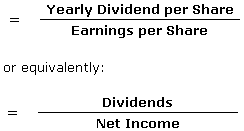For a long time, we have been hearing that the stock market is headed for a significant crash. Is 2014 the year?
Back in 2011, some Elliott Wave aficionados were telling us that the crash was on its way. Since that time, there has been a tendency to stop listening to those who have been crowing about the next financial crisis since before we even recovered from the last financial crisis.
But during the past few weeks, we have been receiving warnings from outside the usual "gloom and doom" sphere. Most notably, bond guru Jeffrey Gundlach gave a webcast presentation on Jan. 14, which raised more than a few eyebrows. Gundlach explained that as the Federal Reserve proceeds to taper its monthly bond purchases, stock market volatility will escalate. He considered the record-high margin-debt levels on the New York Stock Exchange as a signal of a stock market "top."
Gundlach's presentation included a handy chart depicting the effects of the various quantitative-easing programs on the stock market, from March 18, 2009, through Jan. 6, 2014. The chart makes it very clear that the stock market's advance during the past five years has been fueled by the Fed's liquidity pump. As the pump gets throttled back, what can we expect to happen?
The recent growth in stock prices has surpassed earnings growth. The trailing 12-month price-to-earnings multiple has soared from 12.8 in January of 2012 to 17.3 in January of 2014.
Using Robert Shiller's Cyclically Adjusted Price/Earnings (CAPE) formula, the CAPE ratio comes to 25.4. As a result, it the stock market "corrects" to the point where Robert Shiller's CAPE ratio declines to where it was in the late 1980s, (approximately 12.5) the S&P 500 would have to drop 50% from its current level to 919. Even if a less-extreme correction were to occur, wherein the trailing 12-month price-to-earnings multiple would fall from the current P/E multiple of 17.3 back to the 12.8 observed in 2012, the S&P 500 index would sink 35% to 1,195.
In considering what could trigger such an event, it is important to keep in mind that the current level of stock prices is apparently being largely driven by investor sentiment, rather than by fundamentals.
For example, those high-momentum stocks, which draw an enormous amount of trading volume, have absurd price/earnings ratios and suffer/enjoy wild swings based solely on "mo-mo." In the event of a meaningful decline, those stocks would likely lead the way down since their investors would have the most to lose. Beyond that, there are quite a number of S&P 500 stocks with trailing 12-month price/earnings ratios in excess of 20. What will happen to the S&P 500 if/when those shareholders start running for the exits?
The triggering event for such a selloff would most likely be somehow associated with the Federal Reserve. Inability to control interest rates or a misstep in the taper could trigger extreme volatility. Just a simple loss of confidence in the Fed and/or its new Chair could be a catalyst for the first significant decline in years.
Complacency is at extreme levels, based largely on confidence in the Federal Reserve being able to stave off any and all evil forces in global financial markets. However, during previous periods of confidence and extreme bullishness, the Fed has been proven unable to stop significant stock-market declines.
While no one can forecast the future, one can get a feel for the "mood of the market" and whether the tide is ebbing or flowing. At this point, it's quite possible that the high-water mark has been reached and that the tide may be turning. In the final analysis, whether or not we see a 50% crash is irrelevant since all market environments offer potential opportunity for those who are ready to change and adapt to the challenges of today's new realities
http://www.marketwatch.com/story/how-about-a-50-crash-2014-01-23?link=MW_story_popular
𝐌𝐚𝐬𝐭𝐞𝐫 𝐭𝐡𝐞 𝐒𝐞𝐜𝐫𝐞𝐭𝐬 𝐭𝐨 𝐒𝐮𝐩𝐩𝐨𝐫𝐭 𝐚𝐧𝐝
𝐑𝐞𝐬𝐢𝐬𝐭𝐚𝐧𝐜𝐞 (𝐓𝐡𝐢𝐬 𝐈𝐬 𝐖𝐡𝐚𝐭 𝐘𝐨𝐮 𝐌𝐮𝐬𝐭 𝐊𝐧𝐨𝐰)
-
In this video, we dive deep into the core principles of support and
resistance, essential tools for every trend trader and technical analyst in
the s...
4 days ago









